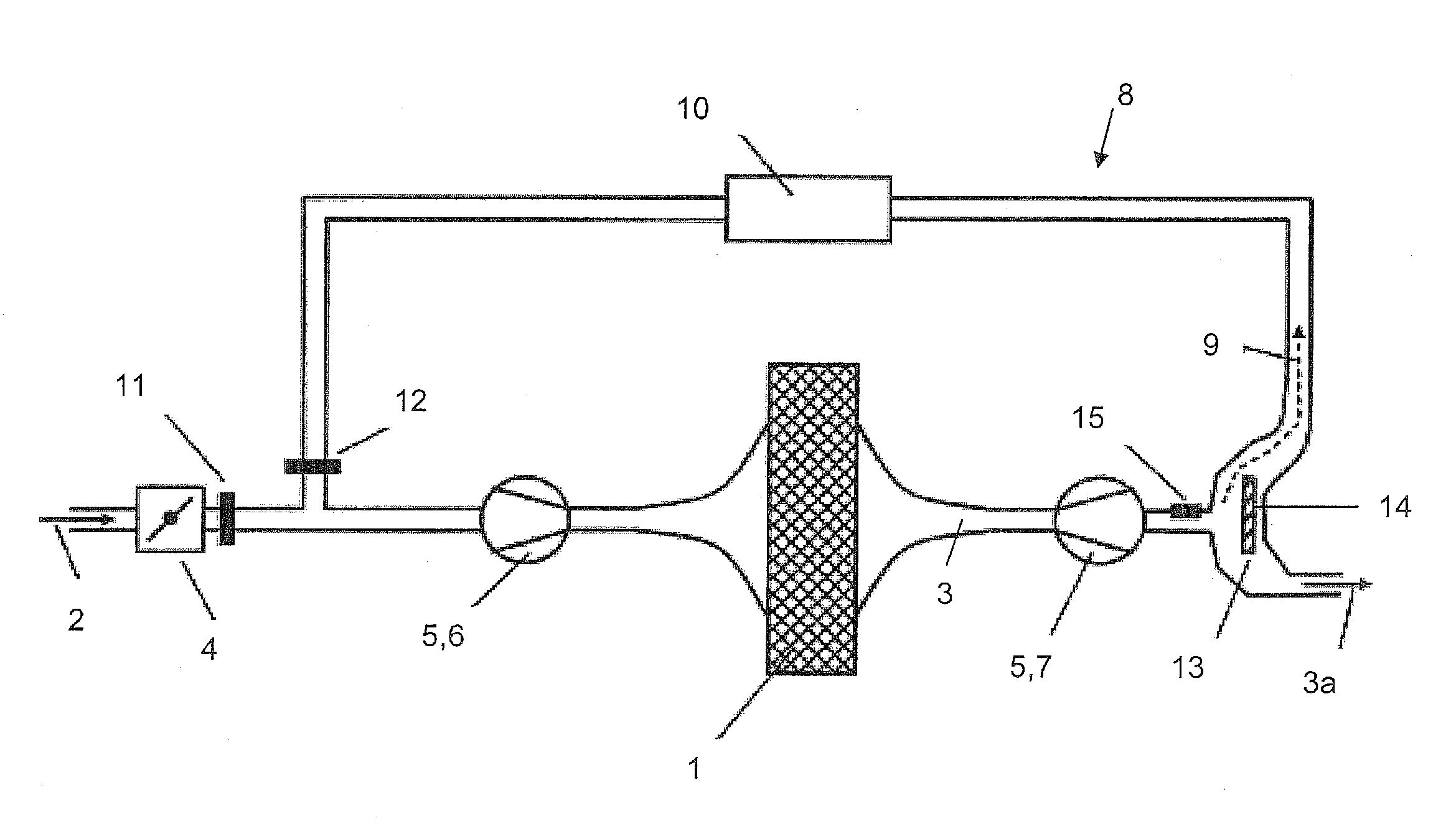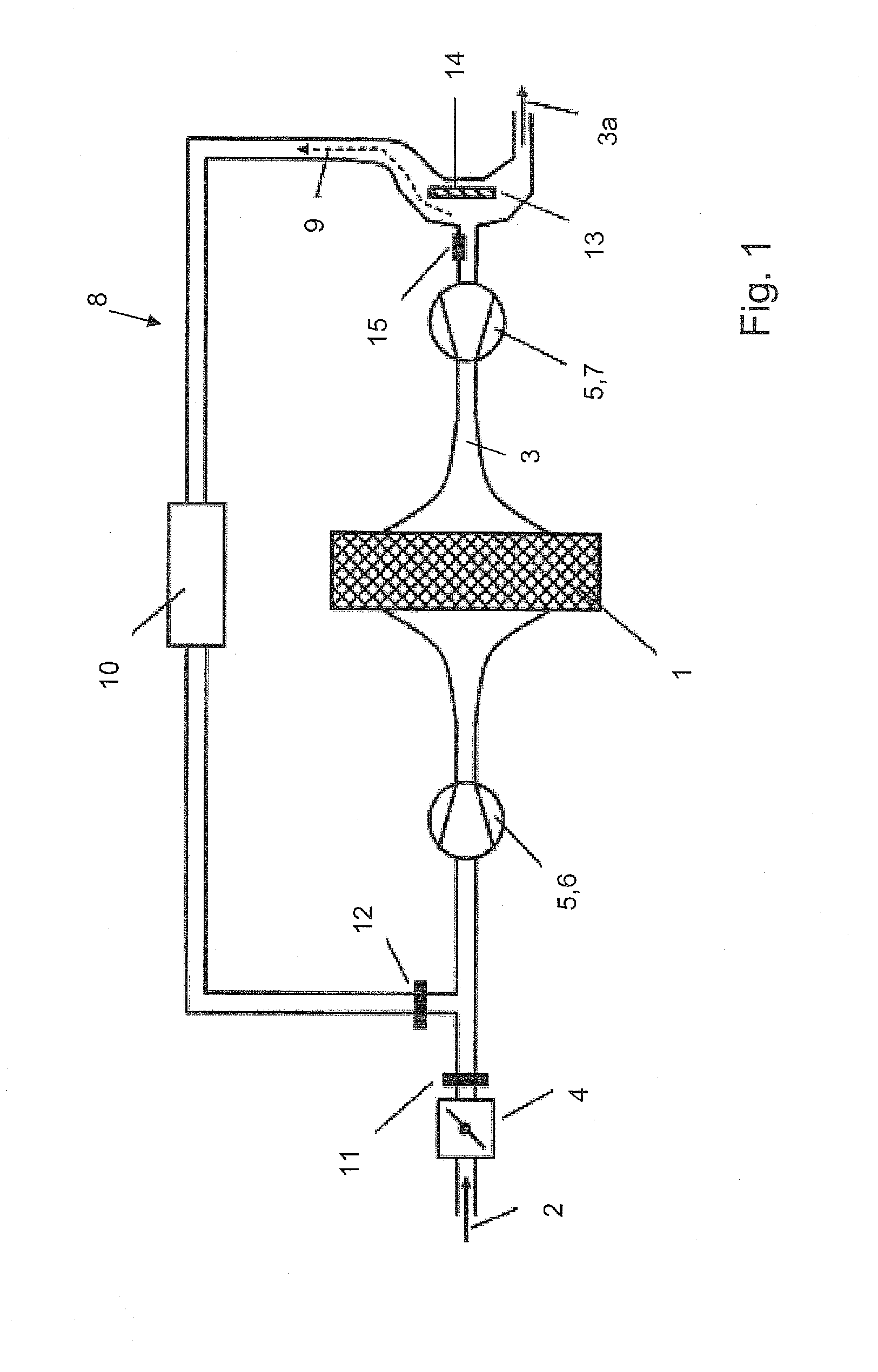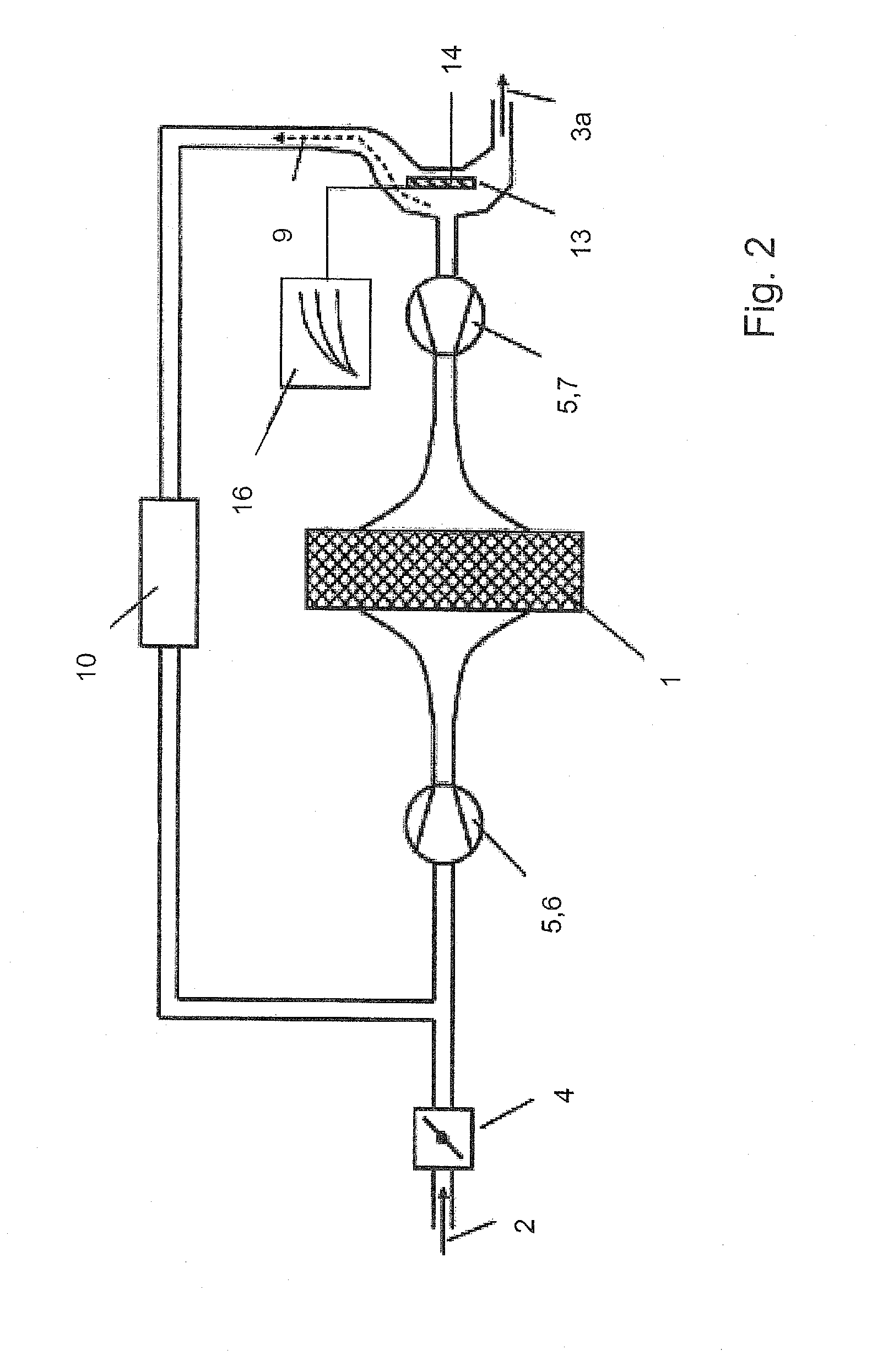Method for operating an internal combustion engine
a technology of internal combustion engine and combustion chamber, which is applied in the direction of engine operation, non-fuel substance addition to fuel, exhaust gas recirculation, etc., can solve the problems of pressure drop or back pressure generation, loss of exhaust gas conducting system, etc., and achieve precise exhaust gas recirculation rate, improved control dynamics, and reduced fresh air volume
- Summary
- Abstract
- Description
- Claims
- Application Information
AI Technical Summary
Benefits of technology
Problems solved by technology
Method used
Image
Examples
Embodiment Construction
[0029]Throughout all the figures, same or corresponding elements may generally be indicated by same reference numerals. These depicted embodiments are to be understood as illustrative of the invention and not as limiting in any way. It should also be understood that the figures are not necessarily to scale and that the embodiments are sometimes illustrated by graphic symbols, phantom lines, diagrammatic representations and fragmentary views. In certain instances, details which are not necessary for an understanding of the present invention or which render other details difficult to perceive may have been omitted.
[0030]Turning now to the drawing, and in particular to FIG. 1, there is shown a basic schematic illustration of an internal combustion engine 1 having a fresh-air line 2 and an exhaust-gas line 3. A throttle valve 4 is disposed in the fresh-air line 2. The internal combustion engine 1 further includes a turbocharger 5 having a compressor 6 disposed in the fresh-air line 2 an...
PUM
 Login to View More
Login to View More Abstract
Description
Claims
Application Information
 Login to View More
Login to View More - R&D
- Intellectual Property
- Life Sciences
- Materials
- Tech Scout
- Unparalleled Data Quality
- Higher Quality Content
- 60% Fewer Hallucinations
Browse by: Latest US Patents, China's latest patents, Technical Efficacy Thesaurus, Application Domain, Technology Topic, Popular Technical Reports.
© 2025 PatSnap. All rights reserved.Legal|Privacy policy|Modern Slavery Act Transparency Statement|Sitemap|About US| Contact US: help@patsnap.com



